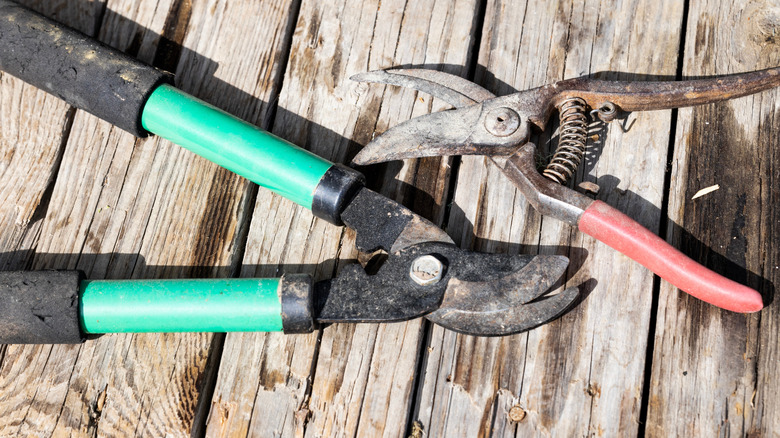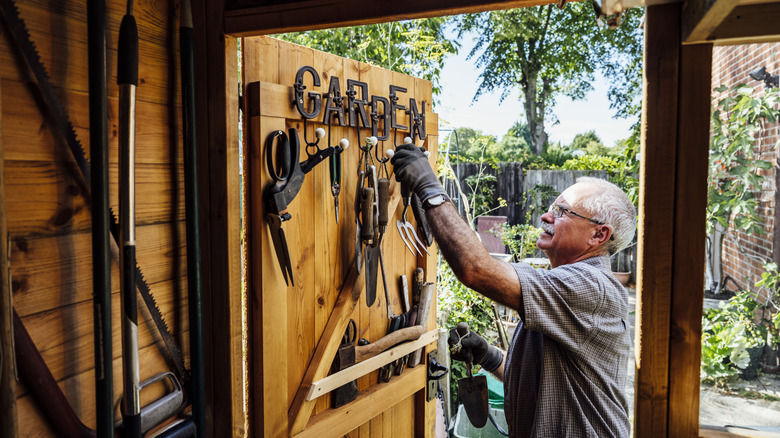Are Used Garden Tools Safe To Use? Here's What We Know
Getting into gardening is an incredibly exciting and rewarding hobby, whether you want to have the most beautiful yard in your neighborhood, get rid of your old gardening supplies for a fresh start, or plant a few things as a hobby. However, the cost of buying a full range of essential gardening tools can add up quickly. That's why turning your attention to used garden tools is a smart, budget-friendly move. Many older tools were built well and made to last, featuring solid designs that often surpass the quality of modern, mass-produced tools, making them a bargain if you can find them. Cost issues are an especially big deal for hobby gardeners; why spend top dollar on new equipment when you are still figuring out what exactly you need?
Choosing secondhand isn't just about saving money, though. It's also the environmentally conscious way to go, since it keeps perfectly usable items out of landfill. Understandably, the term "used" might make you worried about the tools no longer being sturdy enough or too close to the end of their lifespan. You may just be surprised, however, at the durability and craftsmanship available from used tools you find at garage sales and the like, which make many safe to use. By knowing what specific safety elements to look for, you can stock your garden shed with reliable, high-quality gear without breaking the bank. When in doubt, tools where your personal safety could be compromised by a malfunction should be avoided. It's the ultimate smart shopping strategy for garden-loving homeowners and budding green thumbs alike.
How to check used garden tools for quality before you buy
While the allure of a great deal is strong, a pre-purchase inspection helps ensure that the tool you choose is both safe to use and worth your investment. First, look over the structural integrity of the tool as a whole. Pay close attention to any wooden components, though older wooden tools were often made with stronger hickory or ash wood. Here, look for any signs of splintering and splitting, which can put your safety at risk and should be avoided, or soft spots indicative of rot (particularly near the head or where the wood meets the metal), which can indicate deeper structural issues.
Next, inspect the metal parts. Rust is okay in used tools, but be sure to differentiate between surface-level discoloration and deeper damage. Avoid tools with heavy corrosion or pitting; you should also be wary of signs of poor welding or fractures, including cracks, as those could indicate that the tool could straight up break soon, compromising your safety. Light rust can often be removed with some basic cleaning, and tools with blades (like shears or shovels) can sometimes be sharpened to a like-new edge, so don't be scared by some wear and tear. Finally, check the moving parts on tools like pruning shears or a wheelbarrow to confirm they can still handle full, smooth movement. Note that a stiff joint may be fixable, but that a frozen one is a hard pass as, once more, this can become a safety issue. With a keen eye and these simple inspection tips, you can confidently turn a used tool into a trusted, long-term partner for your own blossoming garden oasis. Just keep up with the garden tool maintenance you should be doing every spring.

